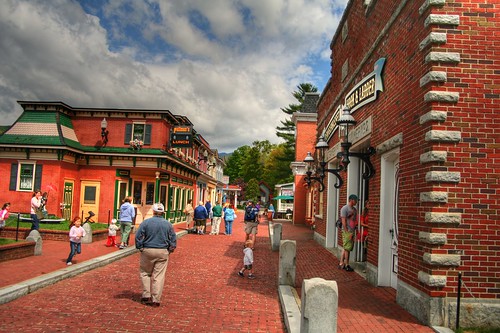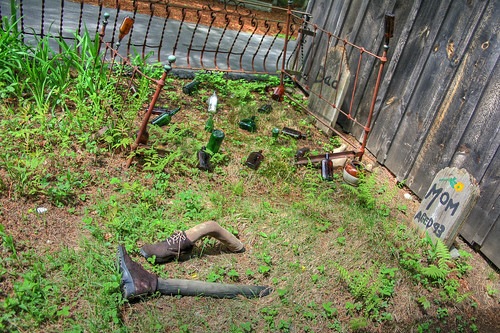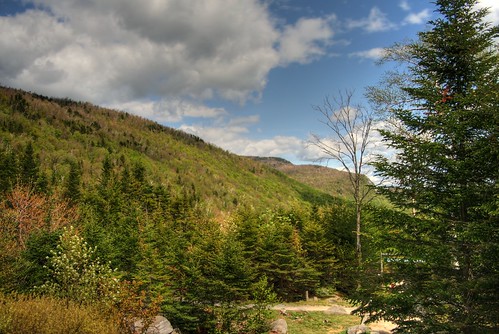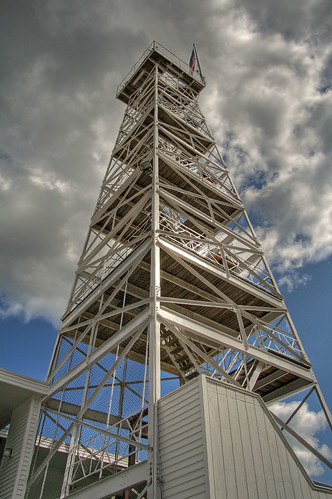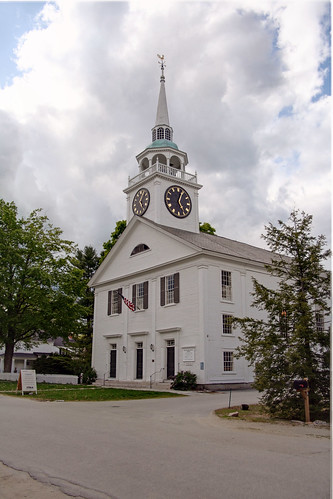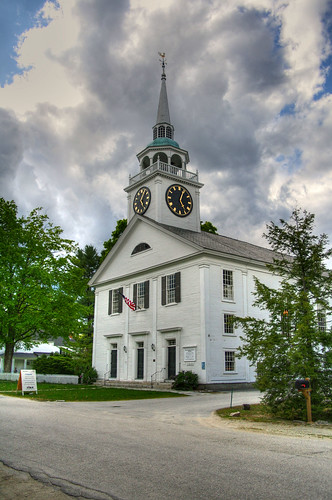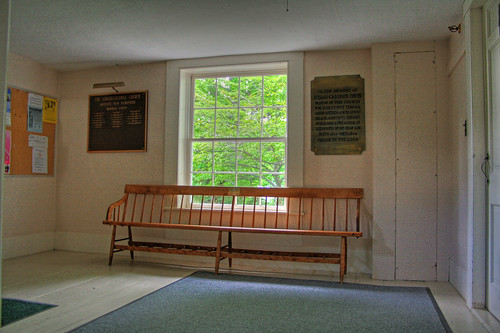…I’d try to arrange a meeting of all the major candidates, in front of the media, where we all pledge to stop this crap. (Obama himself commented that he knew Hillary meant nothing negative, but that after such intense campaigning, he knew exactly what it was like to slip up and say something that sounds really bad but wasn’t what you meant.)
Category Archives: Rants & Raves
Windows Login, Verbose Mode
I made a bunch of changes all at once, and suddenly my system froze when I tried to log in, just saying “Loading your personal settings…”
For a long time, I’ve wanted Windows to show me exactly what it was doing, since “Loading your personal settings…” means nothing. Is it choking on a config file? Trying to reconnect to the network share that doesn’t exist anymore? Is my new anti-virus software conflicting with the old?
I’m still not entirely satisfied, but it turns out that Windows does support extended messages in the login dialog: in HKEY_LOCAL_MACHINE / Software / Microsoft / Windows / CurrentVersion / Polices / system, create a DWORD called “verbosestatus” and set it to 1. (And, per some of the online guides, make sure you don’t have a “DisableStatusMessages” key, or at least make sure it’s set to 0.)
Now, instead of getting “Loading your personal settings…” I can see exactly what file it’s loading. Although to be honest, that wasn’t at all helpful in this case, but this is a setting I’m going to leave on.
As an aside, don’t ever run two anti-virus programs at once. I’m pretty sure that’s the program. Safe Mode doesn’t let you remove software (stupid! stupid! That’s why I needed to get into Safe Mode), but I remembered the old msconfig (Start -> Run -> “msconfig”), where I was able to be judicious in disabling both anti-virus applications, along with some other services that I really don’t need running in the background anyway. And now it works like a charm.
Central NH Photos
I joined my family today in central/Northern New Hampshire. It was opening day at Clark’s Trading Post, a favorite of my brother. My brother encouraged me to go with them, and the forecast called for a decent day, so I figured I’d tag along. The area’s always been quite photogenic, and I figured it’d be a good chance to continue my exploration into HDR.
That’s the train at Clark’s. This is what I like to think of as a halfway-decent HDR shot: a close inspection will reveal some technical flaws, but it’s normally a difficult subject to shoot well. It’s largely a black train, glossy in parts, matte in others, but it also has shiny metal highlights, plus the sky. This isn’t to say that it can’t be photographed, just that the results are ordinarily less than stunning. What I like about this shot is that your first thought isn’t, “What type of surrealist artwork is this?!” As seems to be typical of my shots, the sky looks kind of wonky, but overall, I’m happy with the shot.
There’s an example of the type of stuff I’m still on the fence about. It’s just kind of jarring in a way, as the colors, while “correct” in a sense, are unnatural. Rather than correcting for the fact that the camera can’t capture the whole scene the same way the human eye might, it goes further and does something even our eyes can’t. It’s a little surreal, but the style is growing on me. (Trivia: look closely and see how many things you can spot wrong. When stitching together multiple photos in which people are moving, things are bound to not quite match up right. They’re fairly subtle in this photo.)
There’s another building, again showing the more “legitimate” aspects of HDR photography in my mind. (Besides the ghostly half-man.) This would ordinarily be a lighting disaster. The building was receiving what was almost direct sunlight, while a dark shadow existed. And the sky was somewhere in between. In this case, I think the blended exposures work perfectly. The same goes true for this shot:
I didn’t know how it’d turn out at first… It looks like a simple shot, but it wasn’t! My typical method is to set my camera up for auto-bracketing, taking three shots in a row, one properly exposed, one too dark, and one too bright, thus increasing the odds that there’s a good shot in there somewhere. Often the main one looks good, but I know that some of the details from the others will boost it when converting to HDR. In this case, though, none of the three worked. If the bottles looked good, the wooden headstones were washed out. If the wall looked good, the grass was far too bright. I had a nicely-bracketed set of three bad photos. Fortunately, Photomatix worked it magic and produced a good shot.
We eventually tired of Clark’s and went exploring the area. Lost River was nearby… I pondered what lens to take, since it wasn’t practical to carry all of them, and made the right choice to bring my wide-angle 18-50mm lens. And here I realized that shooting for HDR, much like switching to using two computer monitors, starting to carry a cell phone, or buying high-thread-count sheets, is a habit that rapidly becomes very hard to break. I’d take a “normal” shot, but realize that parts were under- or over-exposed, so I’d retake the shot as a bracketed set of three, and spent some time in the car ride back home on my laptop merging them.
This is at the Lost River section; hardly the best shot, but a quick-and-dirty example of an ‘acceptable’ use of HDR. The trees are well-lit, and so is the sky. Difficult to pull off with one exposure, but a piece of cake with three and HDR!
As we went along, I noticed various parts of running water. (I thought this was a lost river… Pretty easy to find.) I’d never actually taken the stereotypical long-exposure moving-water shot, so this served as a good opportunity. I set the camera to ISO 100 (pretty insensitive to light, very low noise, but meaning slower shutter speeds), and stopped the lens down to f/22, which gave me about a one-second shutter speed. I set the camera down on a railing and pressed the shutter. Viola!
But I was curious… How would my newfound obsession with HDR play into this? Could you “bracket” that type of shot, and merge them with any success?
I actually didn’t expect this to work, but it ended up being one of my favorite shots from the day. The shots were something like 1/3 second, 1 second, and 2 seconds, so I expected that the water / person would have moved too much. As luck would have it, they didn’t, and the result was that shot. (A nice side-effect is that I rarely remember to stop the lens down for landscapes, but I necessarily did here… At f/22, everything, in theory, is in focus. Although if you look closely, you’ll notice that some of the photo is kind of soft where things got matched up slightly off-kilter.
We then went to the Indian Head Resort, where, in a welcome break from $15 admission tickets, we paid 50 cents to climb the tower. (In hindsight, they should have paid me to climb that thing!)
Doesn’t it look big and scary? Nevermind that I used a wide-angle lens feet away from the base to distort the perspective, nor that I made it an HDR exposure to boost the ominous dark clouds that really weren’t that ominous or dark.
That’s the Indian Head. For those easily confused like me, the Indian Head, and the Old Man of the Mountain are two separate things. I initially remarked, “It kind of still looks like a face,” before realizing that it was the Old Man that came tumbling down, not the Indian Head.
This was yet another one of those shots that was pretty tricky. I pulled out a polarizing filter for this one to try to boost contrast and get the sky to not look so gloomy; you wouldn’t know from the picture, but it helped. You also wouldn’t know from the picture, but this, too, is an HDR shot.
Facing the other way, I decided to take a series of shots holding the camera vertical, intended to be stitched together into a panorama. Since I have under 500MB free on my hard drive (?!) and since I couldn’t find PanoTools or any of its ilk, I ended up trying Windows Live Photo Gallery, which I installed at Mr. T’s suggestion but never got around to using much. (I also brought the image into Photoshop, where I cropped it and tweaked it.)
I’d like to give it good reviews, as it was very easy and quite intuitive. The problem is that I’m fairly certain this isn’t actually how things looked. The pond looks right, but I’m fairly certain that there were more ‘humps’ off to the left. I’m really not sure what happened, but the end result looks good, so I’m happy.
Jealousy
From NY1:
Illinois Senator Barack Obama is campaigning in Florida today. He’ll be in Connecticut Sunday to deliver the commencement address at Wesleyan University, in place of Senator Ted Kennedy.
Our speaker was alright, but he was no Barack Obama. And why did Wesleyan get Ted Kennedy, when he’s our Senator?!
About Time
The International Herald Tribune reports that Myanmar’s leaders have just allowed foreign aid workers into the country. I seem to recall a story from a week or two ago about how they were accusing France of sending a warship to take over their country, when France suggested that the ship was actually coming with doctors and food or something like that.
Glad to see that Myanmarians (Burmese?) will no longer have to suffer because of their leadership.
Also: they have pretty fancy rooms in Myanmar, with huge chairs.
Well-done
After hearing that McCain was talking on TV about how Obama would be a good President, or something similar, I figure I’ll continue doing things backwards, and lend a compliment to McCain.
Obama caught tremendous controversy after Rev. Wright’s comments were taken out of context and played over and over in the media. He initially stood by Rev. Wright, which was the “right” thing to do in my mind. But in an election where people are already (unjustly) questioning his patriotism, it wasn’t the popular decision. Rev. Wright went on to make more statements, when Obama finally distanced himself from his increasingly offensive remarks.
Rev. John Hagee talked about how Hitler had just fulfilled God’s will, and then endorsed McCain. McCain rejected Hagee’s endorsement, saying, “Obviously, I find these remarks and others deeply offensive and indefensible, and I repudiate them. I did not know of them before Rev. Hagee’s endorsement, and I feel I must reject his endorsement as well.”
Well-done, sir! (Hagee then withdrew his endorsement of McCain.) And at the same time, McCain made sure reporters didn’t take anything out of context, throwing in, “I have said [before that] I do not believe Sen. Obama shares Rev. Wright’s extreme views.”
I hope the rest of the campaign goes this way: more of a friendly campaign. Both candidates have condemned those in their party that go for underhanded tactics. I confess that I’m not too fond of McCain (though I don’t have anything terribly negative to say about him), but this sort of, “Not being a sneaky bastard” philosophy is one of the things that drew me to Obama. That McCain is adopting a similar policy bodes well, I think, for America, regardless of who wins.
(Full disclaimer: it’s being alleged that Rev. Hagee’s words, much like Rev. Wright’s, were taken out of context, and I believe it. But frankly, it’s a moot point: much like with Rev. Wright and Obama, it’s not so much the truth as it is the perception.)
HDR
I brought my brother to organ lessons today, which are held in an old (18th century, I believe) church in Amherst. So I brought the camera along in anticipation of some more HDR fun.
This is a so-so interior shot. Note that it’s kind of noisy (grainy), I’ll touch on that in a bit. Also note, just as an interesting tidbit, the green cast on things: it was sunny outside and there were lots of green trees right outside the window. This shot, in my mind, is more about what HDR should be used for: getting ‘appropriate’ results where the camera normally wouldn’t hold up. To get detail in the pews and yet not have the upper third of the image ruined by the windows would ordinarily be difficult.
Here, side by side (I hope) are two versions of the same thing. They were both taken from a set of three bracketed shots. That is, I have the camera take three shots back-to-back, the first “normal,” the second overexposed (too bright), and the last underexposed (too dark). The underexposed one gets the detail in the sky and clouds well, but the foreground is really dark. The overexposed one fills in all of the details that would otherwise be too dark, such as the leaves on the tree.
The problem is that, after seeing both, I don’t like either. The “exposure blending” one looks natural, but very washed out and dull. The HDR one, by contrast, looks absurdly unreal, but is very contrasty, colorful, and preserves all the detail.
That’s a building right next door to the church that burned down. (And has been sitting there in ruins for months.) It’s weird how the tree in the upper left seems almost like it was Photoshopped in because the lighting doesn’t match at all. This is actually a case where HDR helped more than it hurt, though: getting any details in the charred part of the building and the white part of the building, with the sun reflecting off of it, was impossible. Here, HDR helps both co-exist. Of course, the sky looks bizarre (why does it change colors like that?), the purple tree at far right looks unsettling, and the trunk of the car in the lower right of the image exhibits noticeable “ghosting” (or is that a reflection?).
Finally, we have this image. Despite the fact that I was basically shooting into a window with sunlight streaming in, it was quite dark. I shot at ISO 800 and f/3.5, and got 1/50, 1/100, and 1/25 shutter speeds when bracketing. The ISO was fairly high at 800, but the XTi performs well and has negligible noise. UNLESS you try to pull lots of detail out of the shadows, as Photomatix apparently does. At a quick glance, this is an OK shot, but look at the walls and their graininess. If you view it larger, it’s even more prominent. Further, the image came out a bit soft, so I’d like to have applied some sharpening in Photoshop, but that just accentuates all the noise.
So I’ll concede that HDR has some benefits, but that it’s easy to overdo it. And, above all, shoot at a low ISO if you want good results!
Freedom of Speech
I see two things done a lot that really bother me, because people get very into their arguments, not realizing that they’re entirely wrong. Both happen to concern the First Amendment and freedom of speech. It might be best to begin by quoting it (emphasis mine):
Congress shall make no law respecting an establishment of religion, or prohibiting the free exercise thereof; or abridging the freedom of speech, or of the press; or the right of the people peaceably to assemble, and to petition the Government for a redress of grievances.
The first thing I see happen is somewhat difficult to concisely define, but essentially, some public figure will make some sort of idiotic statement that ends up causing great offense to one group or another. Some people get upset and request an apology and a retraction of the statement. The person who made the remark, though, refuses to apologize because of his right to freedom of speech.
I suppose they’re right: they do have the right to say offensive things. But it’s utterly irrelevant to criticism? Actually, quite the opposite is true! Freedom of speech is what gives others the right to criticize your freedom of speech! It always struck me as a non-sensical argument, to vehemently “invoke” your Constitutional right when no one was trying to encroach on it in the first place.
I see my second pet peeve even more often! Freedom of speech refers to government actions. If you start yelling profanities in school and the teacher tells you to stop, it’s not violating your Constitutional rights. When you vandalize Wikipedia and I undo your edit, I’m not violating your Constitutional rights. When the (private) school newspaper realizes that your article was plagiarized and bans you from submitting articles for the rest of the year, they’re not violating the First Amendment. If the government’s not doing it, it’s not a First Amendment violation!
It boggles my mind how many people miss these points!
Feeding the Trolls
News sites keep adding comment sections, but for some reason draw users who post comments more absurd than those on Youtube. Take this article as an example, about how a decorated military nurse was discharged after commanding officers found out she was a lesbian. The court ruled that they couldn’t dismiss her solely for her sexual orientation.
Comments include things like:
Remember when homosexuals used to just want to be left alone to do their thing in their own bedrooms?
Now they are attempting to overturn society with their desperate craving for mainline acceptance of their proclivities.
And someone going on about eternal damnation. And, as usual, there’s not just hate for some group, but there’s also a complete lack of coherent points:
Homosexuality is still not as main steam as they want us to believe it is. You can”t even watch a television program these days that doesn”t have a gay character in it.
Don’t those two sentences contradict each other?
The thing is… This is a pretty calm discussion. No one has blamed Bush yet, no one has invoked Nazi references, no one has talked about a vast liberal conspiracy, and no one has attacked any of the three major Presidential candidates. This one only makes me cringe a little at the pathetic course of the discussion, not fear for the future of America. Besides, what motivates people to go on news websites to rant about their opinions?
…That’s what blogs are for.
The State of Linux
I don’t really remember precisely when I started using Linux, but I do distinctly remember December 31, 1999, around 11:55pm, sitting in front of my computer and seeing what would happen. (Absolutely nothing out of the ordinary.) I was in KDE at the time, back when they had a HUGE digital clock that looked like crap even then.
I remember when USB thumb drives came into vogue, and I tried using mine in Linux. They worked! I just had to pull up a shell window, su to root, mkdir /mnt/usb, and then mount it there. And one day I forgot to umount before unplugging it, causing a kernel panic. Windows, meanwhile, let you plug the thumb drive in and seamlessly mapped it to a new drive. When you pulled it out, it unmounted the drive for you. (Although it still occasionally gripes at me with “Delayed Write Failed” even after I’ve closed everything using it and let it sit for quite some time. But I digress.)
Today, without thinking, I decided to plug my Logitech G15 into my Linux machine, running Ubuntu’s Hardy Heron release. It worked, but that’s not saying much: any old OS can see a USB keyboard. But what took me by surprise was what happened next. Without thinking, I used the volume wheel on it to turn down my music. It worked! On a whim, I hit the “Previous Track” button, and Rhythmbox started playing the previous song. I had to install drivers for this in Windows, but not in Linux. How’s that for a role reversal?
Of course, this isn’t a “Linux is superior.” There are still some flaws on my system that drive me crazy (why do my graphics drivers keep suspend/hibernate from working?!), but I can say that about Windows too. The point is that Linux used to be laughably far behind Windows in terms of things “just working.” And now I occasionally find myself wishing Windows were as easy to use as Linux in some regards. This is impressive progress!

